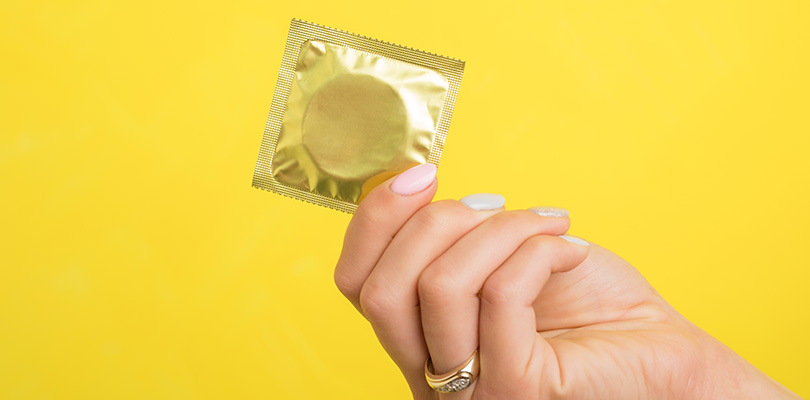Non-Hormonal Birth Control Options
If you’re a woman in your childbearing years, you may be overwhelmed when you start looking at all of the birth control options that are available. While many birth control methods contain hormones, there are others that do not. For some people, hormones can cause adverse side effects. If this is the case for you, it's worth talking to your doctor about non-hormonal birth control options.
We’ll discuss what non-hormonal birth control is, what options are available, and outline the details of each method so that you can make an informed decision about what option is right for your lifestyle.
What Is Non-Hormonal Birth Control?
Non-hormonal birth control is simply any birth control option that doesn’t involve hormones. You may be looking at non-hormonal birth control options because you’re currently using hormonal birth control and experiencing side effects such as skin and breast changes, hair loss, changes to your sex drive, and/or you’re concerned about long-term cancer risk.
However, there may be other reasons you’re considering non-hormonal options, including:
- You don’t need (or want) on-going birth control.
- You don’t want to interfere with your body’s natural reproductive cycle.
- You want an additional birth control method to use in conjunction with your hormonal birth control.
Non-Hormonal Birth Control Options
There are a variety of options for non-hormonal birth control ranging from short-term disposable options to long-term reversible options and even permanent solutions. Below we’ll break down some of the most commonly used non-hormonal birth control options and discuss the advantages and disadvantages of each method.
Short-Term Non-Hormonal Birth Control Options
Non-hormonal short-term birth control options include male condoms, female condoms, spermicides, contraceptive sponges, diaphragms, and cervical caps.
1. Male Condoms
Male condoms consist of a thin sheath that is typically made of latex, synthetic latex (nitrile), or animal skin. Condoms are placed over the penis before intercourse to collect sperm. When condoms are used correctly, they are quite effective – 98 percent with perfect use, and 85 percent with regular use.
Advantages:
- Protects against sexually transmitted infections (STIs).
- Inexpensive.
- Easy to carry.
- Widely available.
- Do not need a prescription.
Disadvantages:
- You have to have them available when you want to engage in intercourse.
- Many contain allergens, toxins, and substances that disrupt hormones.
2. Female Condoms
Female condoms are inserted into the vagina before intercourse. They look similar to male condoms except that they’re larger with rings at both ends and they’re usually made of nitrile or polyurethane. When they are used correctly, they are quite effective – 95 percent with perfect use and 79 percent with regular use.
Advantages:
- Protects against sexually transmitted infections (STIs).
- Extra stimulation from the rings on the condom.
- Do not need a prescription.
Disadvantages:
- You have to have them available when you want to engage in intercourse.
- Many contain allergens, toxins, and substances that disrupt hormones.
- Not as readily available as male condoms in stores.
- Insertion can be difficult.
3. Spermicide
Spermicides are available in gels, creams, and suppositories. They are inserted in the vagina before intercourse, which stops sperm from entering the uterus. Additionally, spermicides also slow down or kill sperm before it can cross the cervix and make its’ way to the woman’s egg. Spermicides fail up to 28 percent of the time, so they’re best used in conjunction with another method.
Advantages:
- Easy to use.
- Inexpensive.
- Do not need a prescription.
Disadvantages:
- Some women experience side effects such as an allergic reaction and/or vaginal irritation.
- Disrupts vaginal bacterial balance, increasing the risk of vaginosis.
4. Contraceptive Sponge
The contraceptive sponge is a disposable disc that is made of foam that contains spermicide, which provides a barrier that blocks the sperm, and also slows down the sperm before it can cross the cervix and make its’ way to the woman’s egg. The effectiveness of contraceptive sponges is 91 percent with perfect use in women that have never given birth, and 76 percent with regular use, and in women who have given birth.
Advantages:
- You can leave it inserted for up to 24 hours.
- Available at most drugstores.
- Do not need a prescription.
Disadvantages:
- Does not protect against STIs.
- You have to wait at least 6 hours after sexual intercourse before you can remove it.
- Increased risk of yeast infection and toxic shock syndrome (rare).
- Contains spermicide.
- Side effects are common, including vaginal dryness and allergic reactions.
HIV infection takes its toll in three stages: acute, chronic, and AIDS. Learn more about the stages of HIV in detail here.
5. Diaphragm
A diaphragm is a small flexible cup that is made of silicone that is inserted into the vagina to cover the cervix before intercourse. A diaphragm must be used with spermicide. The effectiveness of diaphragms is 94 percent with perfect use, and 88 percent with regular use.
Advantages:
- Each reusable diaphragm can be used for up to 2 years.
Disadvantages:
- Does not protect against STIs.
- Cannot be used during monthly periods.
- Has to be used with spermicide.
- Has to be prescribed and fitted by a doctor.
6. Cervical Cap
Cervical caps are similar to diaphragms and consist of a small silicone cup that is inserted into the vagina before intercourse. Also, cervical caps should be used with spermicide. The effectiveness of cervical caps is 86 percent for women that have never given birth, and 71 percent for women that have had a vaginal delivery.
Advantages:
- Each reusable cervical cap can be used for up to 2 years.
Disadvantages:
- Does not protect against STIs.
- Cannot be used during monthly periods.
- Has to be used with spermicide.
- Has to be prescribed and fitted by a doctor.
Long-Term Non-Hormonal Birth Control Options
Non-hormonal long-term birth control options include IUDs and sterilization.
1. Cooper Intrauterine Device (IUD)
An IUD is a T-shaped device that is placed into the uterus by a doctor. The non-hormonal IUD contains copper that is released into the uterus, making it toxic to sperm. These devices are very effective at 99 percent.
Advantages:
- There’s no need to remember to take “the pill” every day or have another birth control method on hand.
- Can last for up to 10 years, but can be removed at any time.
Disadvantages:
- Does not protect against STIs.
- Side effects are common, including cramps, heavy bleeding, and spotting in between periods (typically, these side effects decrease over time).
- Continual exposure to copper has the ability to cause copper toxicity.
- IUD’s can be expelled from the uterus.
2. Sterilization
For women, sterilization involves a surgical procedure known as tubal ligation. Effectiveness is 99 percent within the first year of surgery, and 100 percent after the first year.
Advantages:
- Permanent solution.
Disadvantages:
- Does not protect against STIs.
- Some women experience menopause-like symptoms.
Another non-surgical option for women is Essure, which is a tiny uterine device that is inserted through the vagina and placed in each fallopian tube. The chemicals released from this device cause inflammation of the fallopian tubes resulting in permanent scarring and blocking of the tubes.
Advantages:
- Permanent solution.
Disadvantages:
- Does not protect against STIs.
- Some women have changes in their periods, cramping, and allergic reactions after placement of Essure.
- Risks associated with the procedure including infection, and ectopic pregnancy.
For men, sterilization involves a surgical procedure known as a vasectomy, which involves either cutting or blocking the vas deferens (the tubes in the scrotum).
Advantages:
- A quick procedure with a rapid recovery.
- Permanent solution.
Disadvantages:
- Does not protect against STIs.
- Risks associated with the procedure including pain, swelling, and infection.
The Bottom Line
Everyone can use non-hormonal birth control methods without worrying about the side effects of traditional hormonal birth control options. Finding the right device, or combination of devices, may take some trial and error, but once you’ve found the right solution, you’ll be on your way to an enjoyable sex life without having to worry about pregnancy.







